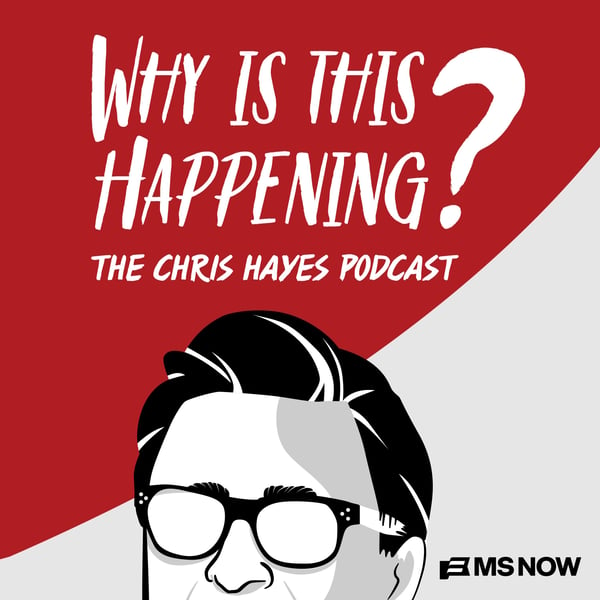The Resistance vs. Trump 2.0 with Omar Wasow
Why Is This Happening? The Chris Hayes Podcast
MS NOW, Chris Hayes
4.6 • 8.9K Ratings
🗓️ 22 July 2025
⏱️ 53 minutes
🧾️ Download transcript
Summary
Transcript
Click on a timestamp to play from that location
| 0:00.0 | In some ways, there's this, you know, sort of unsettling panopticon, which means we're all now surveilled, |
| 0:12.7 | but it also means that much of the state violence is documented. |
| 0:16.9 | And that I think you're right, that those images are, in fact, moving public opinion and that this is not a sustainable policy because of that, because people are at some core level moved and sympathize with the people who are the targets of that state violence. |
| 0:40.5 | Hello and welcome to Why Is This Happening with me, your host, Chris Hayes. |
| 0:49.7 | Something I've been kind of obsessed with over the last month is the protests that took place on June 14th, the No King's protests. |
| 0:58.2 | And both the protests themselves and the kind of coverage of them or the place they occupied in public imagination, there were something like 2,200 events. |
| 1:09.2 | They took place across the country in all 50 states. |
| 1:12.2 | And unlike some big, say, March on Washington, right? |
| 1:15.1 | Where there's a centralized location and say 500,000 people show up or a million people show up. |
| 1:19.5 | The idea here was to do it in a kind of like devolved grassroots way, right? |
| 1:24.7 | Distributed throughout the country. |
| 1:26.5 | Also, it makes it easier for people to go and people, even in places that, you know, small corners of Kentucky, for instance, where you might think, oh, there's a bunch of people who really don't like the direction the country's going under Donald Trump. But it turns out they're there. I thought that was sort of brilliant. But one of the things that ended up happening, I think, was partly because it happened on the same day as the Trump military parade. The coverage was sort of split screen. The cover of the Times the next day was like, people gather as Trump military parade happens. And I was hosting several hours of television, which we did something similar. But the scale of it really got lost. So after all was said and done, a bunch of people tried to kind of run the numbers, like how many people came out for these protests? And these are not like, these are not propagandists. These are not people. They're like really trying to get the math right in a difficult times. Right. Crowd estimates are always hard. There's an old joke in sort of lefty circles, right? That like 100,000 people show up at an anti-war march and the cops say |
| 2:18.1 | there's 5,000, right? Like, this is sort of an old trope in crowd estimates and a kind of |
| 2:23.7 | battle between different forces about how many people were there. But people who are like |
| 2:27.2 | serious people trying to sort of scan through and do the best most rigorous job of like figuring |
| 2:31.7 | out how many people came out. G.ott morris was one of them came up |
| 2:35.0 | with a figure of like maybe three to five million people which you'll put it as some of the biggest |
| 2:40.3 | protests of our lifetime and i think it's fair to say that they did not get covered as some of |
| 2:46.1 | the biggest protests for a lifetime i think there's just no way to say otherwise. And I'm pretty interested in this |
| 2:53.6 | conception. And the reason I'm pretty obsessed with this is I more and more think that kind of as we |
| 2:59.3 | watch so many institutional safeguards fail, this idea that civil society, that we are all we have here |
| 3:06.9 | as the bulwark for democracy. And I don't mean that like society, that we are all we have here as the bulwark for democracy, |
... |
Please login to see the full transcript.
Disclaimer: The podcast and artwork embedded on this page are from MS NOW, Chris Hayes, and are the property of its owner and not affiliated with or endorsed by Tapesearch.
Generated transcripts are the property of MS NOW, Chris Hayes and are distributed freely under the Fair Use doctrine. Transcripts generated by Tapesearch are not guaranteed to be accurate.
Copyright © Tapesearch 2025.

